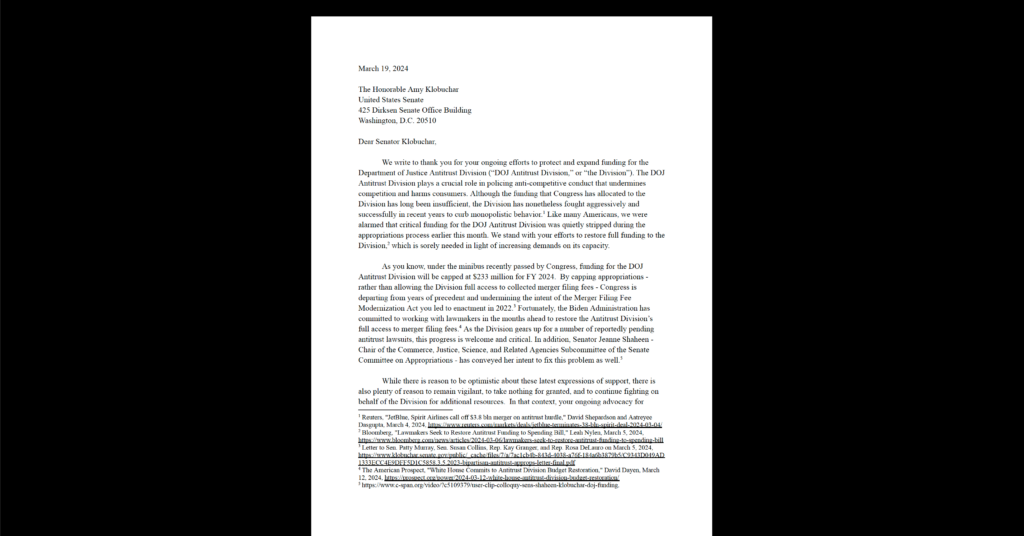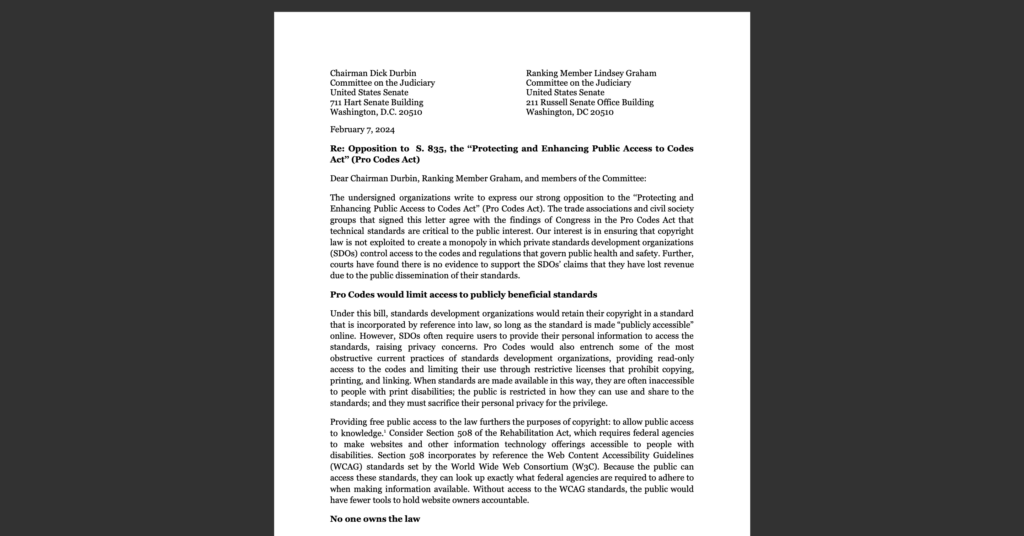What Can We Glean from DOJ’s Antitrust Case Against Google?
Antitrust has been the buzz in Washington for the last few years, and you might think that there has been a flurry of litigation as the rise of tech giants has captured headline after headline, Congressional hearing after Congressional hearing. So here’s a quick quiz: how many cases did the Department of Justice (DOJ) bring against alleged monopolists for their anticompetitive behavior in 2019?
Zero. In 2018? Zero. In 2017? Zero. Lest you think antitrust is hyper-political, let’s look at 2016: Zero. 2015? Zero. 2014? Zero. 2013? Zero. Indeed, until now, the DOJ had brought exactly one monopolization case since its battle royale against Microsoft in 1999. That one case, in 2011, was against a hospital system in Wichita Falls, TX (population 104,576).
The DOJ has been reluctant to bring cases about abuses of monopoly power because court precedents have made them very difficult to win. The evidentiary standards are imposing. With limited staff time available, DOJ leaders have been hesitant to spend resources on cases where there is a relatively high risk of failure. That’s truly terrible, because as doctrines about monopoly power and its abuse grow older, it becomes increasingly difficult to apply them to a vastly changed economy. Cases about market power on boat engines are hard to graft onto the digital economy. More attempts at their application would at least help identify where doctrines need updating, even if it results in losing litigation for DOJ.
So the first thing to glean from the DOJ’s case against Google, filed this Tuesday, is that maybe, just maybe, the government wants to get back into business with cases that challenge conduct by powerful firms. I sure hope so.
The second is that DOJ’s complaint hardly mentions the word “price.” Instead, DOJ’s complaint describes the harm from Google’s alleged conduct as “reducing the quality of general search services (including dimensions such as privacy, data protection, and use of consumer data), lessening choice in general search services, and impeding innovation.” (para 167.) The DOJ and the FTC have always had the ability to bring cases that were based on competitive harms other than price, but they have tended to stick to claims about price effects, with econometric studies, giving judges both statistics and experts on which to rely. In this huge new case, DOJ’s emphasis on non-price factors like quality and innovation marks an important recognition that antitrust laws can consider factors other than price. It puts the DOJ in interesting dialogue with the House Judiciary Committee, whose leadership has called for updates to the antitrust laws in part because of the perception that existing antitrust law is not well suited to address non-price harms.
The third is that this case is largely about Google allegedly locking up access to consumers. The Complaint states that Google has paid billions for preferential placement of its search engine on iPhones and phones made by companies like Samsung and LG, through wireless carriers like Verizon and AT&T, on browsers like Mozilla, and via its mobile phone operating system, Android, in addition to funneling people to Google Search on Chrome, the browser Google owns. In antitrust parlance, we call that “foreclosure” — in short, competitors are blocked from accessing the market, can’t get scale, and fade away, leaving the monopolist as the only option.
The interesting aspect of the DOJ’s case against Google is that it basically equates to being the default search engine with foreclosing competition. That’s novel. In the past, foreclosure cases involved making access for competitors impossible, either through contract or technology. In this case, DOJ is essentially trying to develop a new antitrust standard: being the default is akin to blocking competitors completely, at least where few consumers ever switch from the default. This focus on users’ actual experience is interesting. Even if the DOJ and Google disagree, they are fighting about how users interact with and experience default settings, not just whether formal barriers prevent users from accessing competitors. That’s an interesting, user-centered development – though it may prove challenging to litigate in court.
A fourth lesson to learn from the DOJ’s complaint is that, among other remedies, it asks the Court to grant “structural relief as needed to cure any anticompetitive harm.” (para 194.) “Structural relief” is antitrust code for “break ‘em up.” The Complaint doesn’t specify what kind of structural relief it thinks might be necessary, and it is common for government antitrust complaints to be vague about what they should get if they win. But would that structural relief mean breaking off the Chrome browser, given that it is the source of many search queries? Or breaking off Android? Or something else?
Finally, some of the challenges DOJ faces in this case do hearken back to yesteryear. DOJ’s Complaint sets out a series of facts alleging that Google uses its power to funnel users to Google Search. Google argues in its immediate response that people choose to use Google Search because they really like it. This is a recurring issue in antitrust: is the success of a big firm due to its great products, or due to abuse of power? This disagreement sounds a lot like what the appeals court wrote in its decision in DOJ’s antitrust case against Microsoft, many years ago: “Whether any particular act of a monopolist is exclusionary, rather than merely a form of vigorous competition, can be difficult to discern: the means of illicit exclusion, like the means of legitimate competition, are myriad. The challenge for an antitrust court lies in stating a general rule for distinguishing between exclusionary acts, which reduce social welfare, and competitive acts, which increase it.” Maybe, with this case, the court (perhaps someday the Supreme Court) will figure out how to do exactly that.


